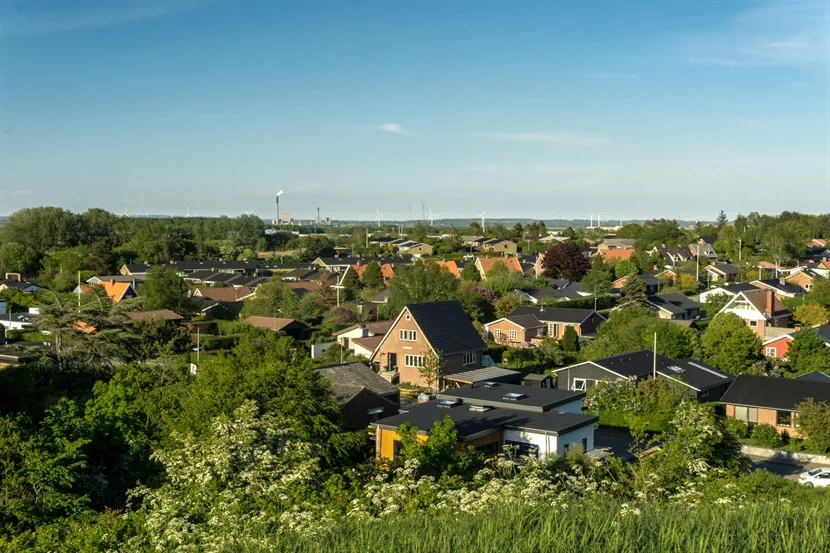A Resilient Rebound: Denmark's Housing Market Springs Back to Life in March

The housing market of Denmark traditionally experiences a transitional phase in March, a trend that was in full swing this year as well. An impressive figure of 6,963 homes found new owners in March, the highest record since May of the preceding year. Across the board, the appetite for home ownership saw a significant boost, pushing up the total home sales by a noteworthy 24% in comparison to February.
Mirroring a pattern observed over the previous couple of years, the surge in home sales between February and March persisted, with growth rates of 15% and 21% respectively. Despite the pattern remaining consistent, the backdrop for the housing market this year holds a unique distinction due to a marked deceleration during the latter half of the prior year, leading to the most significant slump in home sales in over a decade. This remarkable downturn hinted at an evolving landscape within the housing market.
Evidence of this shift materialized as 2023 unfurled. Home sales have seen a steady ascent in the first quarter, particularly in March. The hesitant posture assumed by numerous prospective homeowners during the latter part of the previous year seems to be morphing into decisive action.
A broader economic setting, marked by steadier mortgage rates, a deceleration in inflation, and a slowdown in the rate of increase of energy prices, plays a substantial role in this transition. Added stability at the household level is lending a hand in the upward trajectory of home sales witnessed in March.
The bullish activity is discernible across all categories of housing, with a specific upswing in the sales of villas, townhouses, and summer houses. In March alone, 4,295 such properties changed hands, denoting a 27% increase compared to February and the most significant sales figure since May of the prior year. Furthermore, sales of summer houses saw a remarkable surge, with 713 units sold, marking a 42% leap from February.
While these sales statistics do not match the extraordinary figures from the pandemic period, the demand for houses and summer houses has rebounded to the pre-pandemic norm. Intriguingly, the sales of these housing types in March exceeded the average for the same month during the 2015-2019 period.
The apartment segment also experienced an upturn, with 1,356 units sold in March, 11% higher than February. Although the trajectory of apartment sales is on the rise, the growth rate lags behind that of houses and summer houses. Furthermore, the sales volume of apartments in March remains noticeably below the pre-pandemic average for the same month, underscoring the pandemic's impact on the housing market.
Interestingly, March recorded a minor inflation across all housing types, signaling a positive shift in the monthly price trend for the first time in several months.
However, the Danish housing market has weathered considerable volatility over a short span. Following the unprecedented highs of property sales and prices during the Covid-19 era, the market witnessed a stark transformation. Increasing interest rates, high inflation, and soaring energy prices imposed a significant strain on the housing market in the latter half of 2022, resulting in considerable price drops and a slowdown in property sales.
Yet, as spring 2023 arrived, the trend appeared to be shifting. Property sales started climbing, and prices demonstrated minor recovery in March after several months of decline.
Potential buyers, who had previously been waiting on the sidelines, are now plunging into the market, potentially benefiting from more affordable options. Notably, the market has seen an influx of first-time buyers, likely spurred on by the recent drop in housing prices. Despite the challenge of rising interest rates, these newcomers are now taking their first steps in the housing market, usually starting with more affordable small apartments.
In summary, the Danish housing market appears to be exhibiting signs of stabilization and a return to pre-pandemic norms, suggesting a healthier market. Buyers, including first-time ones, seem to be reclaiming their confidence, propelled by an improved economic outlook and the promise of better deals. The continuity of this trend hinges on several elements, including economic stability, interest rates, and the broader global economic outlook.
- April 2024 (1)
- March 2024 (3)
- February 2024 (5)
- January 2024 (4)
- December 2023 (3)
- July 2023 (1)
- June 2023 (5)
- May 2023 (1)
- Navigating the seasonal shifts in the residential real estate market 4. April 2024
- The rise of co-living: redefining room rentals for the modern era 21. March 2024
- The digital house hunt: How tech is transforming the search for real estate 14. March 2024
- Enhancing rental appeal through outdoor space redesign 7. March 2024
- Spring Cleaning Tips for Home Sellers and Renters 29. February 2024
- Nordic charm: The enduring appeal of scandinavian design in today's real estate market 23. February 2024
- Preparing Your Home for the Market: A Comprehensive Guide 15. February 2024
- Embracing the compact living revolution 9. February 2024
